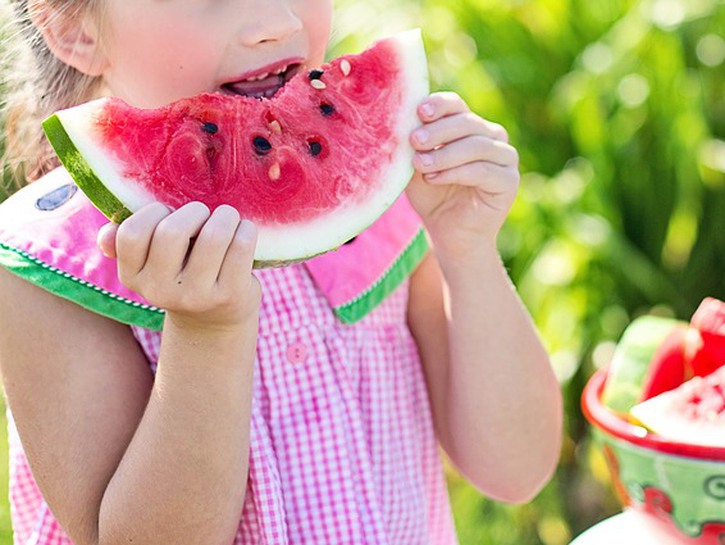When you’re planning a barbecue there are some things you need to cross off your checklist in order to make a success. Hamburgers and hot dogs are pretty standard but the snacks are just as important. What’s on everyone’s mind on a hot summer’s day? A heaping amount of fresh watermelon.
There are several different ways to determine whether a watermelon is ripe enough to take home, but there are key things you should be on the lookout for when choosing the perfect one for your next barbecue:
- Make sure the watermelon has a dark green exterior
- Weigh it in your hands
- Check for a yellow field spot
- Tap on it for a fresh “plunk” sound
How To Pick A Good Watermelon

If you’re a little self-conscious about sniffing watermelons in the supermarket, don’t worry. First, I don’t blame you and second, there are easier ways for you to choose the perfect watermelon to take home. Sure, you can just try to eyeball it and whichever one doesn’t have any bruising or mold on them is good enough, but these methods won’t take you much time and you’ll leave the market with the best watermelon available.
1. Do A Once-Over
If you’re pressed for time and need to choose a watermelon in a pinch then there are cosmetic imbalances to look out for. If a watermelon is a dark green in color with a dull exterior, then you’re looking ripe fruit. You want to make sure that your watermelons aren’t too shiny or a yellow-green in color.
2. The Heavier The Better
Watermelons are made up of 92 percent water, according to the National Watermelon Promotion Board, which means that the heavier it is, the better off you’ll be. Pick up a couple watermelons and weigh them in your hands. It all boils down to weight so don’t focus too much on the size and focus instead on which ones feel the heaviest. The more weight they carry, the riper they’ll be.
3. Find That Field Spot
The field spot is a light, creamy yellow spot on the underside of the watermelon. Its name stems from where the watermelon would have been resting on the ground as it was growing in the fields. Flip your watermelon over and take a look to see if it has a nice yellow spot on its underbelly. If it does, you’re looking at a ripe watermelon.
4. Give It The Ol’ Tap
You may not be a big fan of smelling your watermelons, but just about everyone is a big fan of knocking on one! Finding the perfect sound takes a bit of practice as an underripe and overripe watermelon produce their own sounds as well. A ripe watermelon has a deep “plunk” sound and that’s the one you’re looking for. An underripe watermelon sounds a bit more high-pitched and an overripe watermelon sounds much duller.

There you have it — how to tell if a watermelon is ripe. Make your next barbecue a hit with enough sweet watermelon to pass around to everyone!
